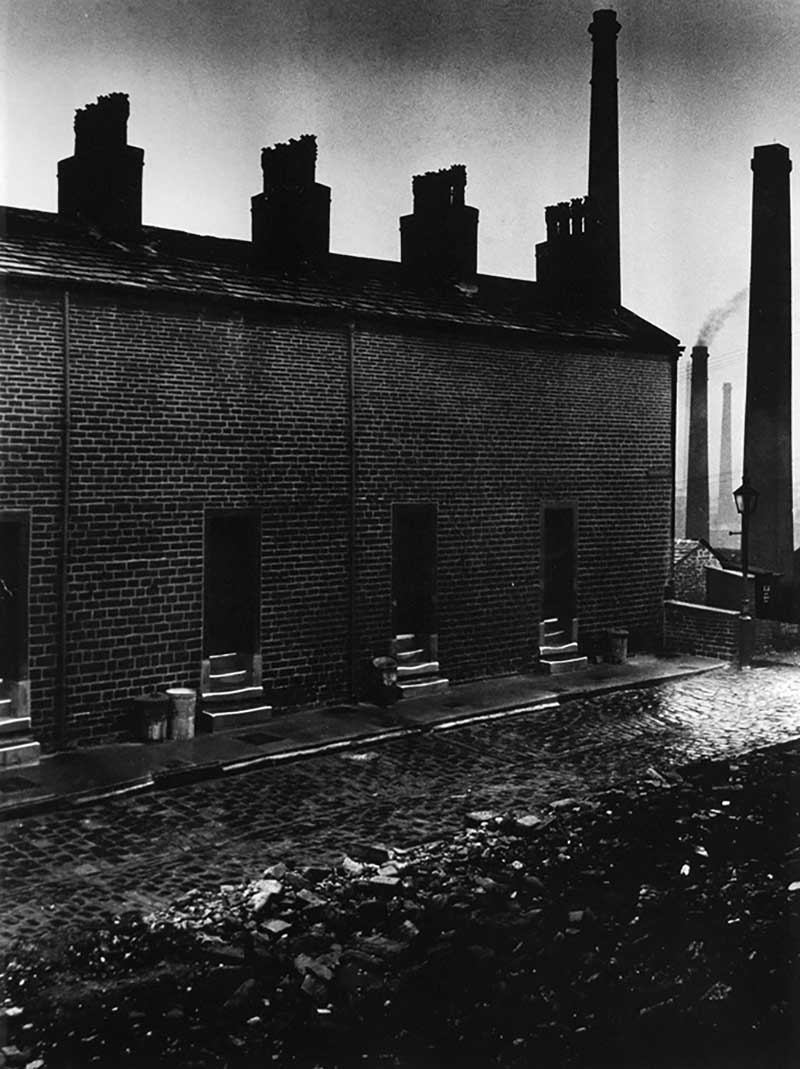Though German by birth, Bill Brandt was an ardent anglophile, later attempting to eradicate his German heritage from his biography. Having visited Britain on several occasions, Brandt settled permanently in 1930. Supported by an allowance from his wealthy father, Brandt lived in Belsize Park, North London, close to his uncle, who initiated Brandt into upper-class life in England.
Brandt was fascinated by the quirks and intricacies of the British class system and in particular the remnants of Victorian traditions that remained entrenched in British high society. Brandt frequently photographed parlourmaids and market peddlers, and other characters of Victorian England. His documentary photography from his early years living in London was almost ethnographical, photographing upper class rituals and daily life with a detached bemusement. These works were compiled into two bodies of work, published as The English at Home (1936) and A Night in London (1938).
In 1937, Brandt travelled to the North of England where he shifted his focus to photograph Britain’s working class. He was struck by the extreme social contrast between rich and poor as he travelled to the industrial towns of the North. Coal Miners’ Houses was taken on a visit to the Durham Coalfields area, and epitomises the ‘noirish’ style of photography that Brandt had made his signature. While his photographs of upper class living often carried a hint of the absurd, Brandt’s photographs of working class life were more sensitive in tone. Though not intended as political propaganda, Brandt’s photographs were taken at a particularly fractious moment of mass unemployment. He played up the melodrama of industrial landscapes and placed them next to polemical images of children in abject misery.
Coal Miners’ Houses is a fantastic example of Brandt’s use of strong contrasts and richly textured printing. Brandt was meticulous when printing his photographs, having learnt and developed his processing skills at Man Ray’s studio in Paris, and would often spend hours in the darkroom manipulating his negatives. Brandt would use extreme contrasts to create a grainy, sooty texture to the print, mimicking the black smoke that billows from the chimney in the background of the image. The dense darkness of the photograph also emphasises the lack of windows and poor lighting for the residents of the street
